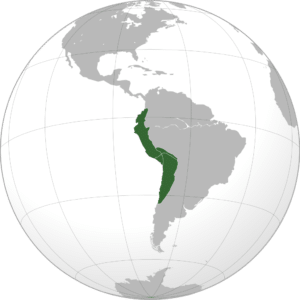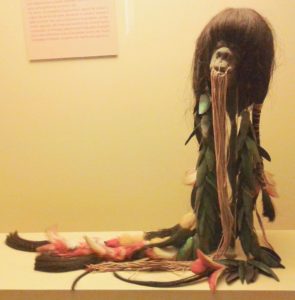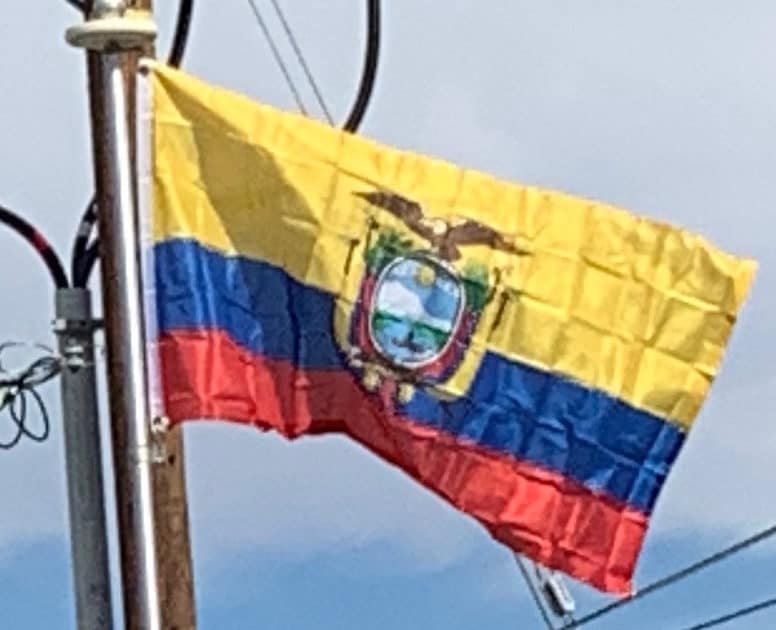Over time these groups began to interact and intermingle with each other so that groups of families in one area became one community or tribe, with a similar language and culture. Many civilizations arose in Ecuador, such as the Valdivia Culture and Machalilla Culture on the coast, the Quitus (near present-day Quito), and the Cañari (near present-day Cuenca). Each civilization developed its own distinctive architecture, pottery, and religious interests.
In the highland Andes mountains, where life was more sedentary, groups of tribes cooperated and formed villages; thus the first nations based on agricultural resources and the domestication of animals formed. Eventually, through wars and marriage alliances of their leaders, a group of nations formed confederations. One region consolidated under a confederation called the Shyris, which exercised organized trading and bartering between the different regions. Its political and military power came under the rule of the Duchicela blood-line.
Inca Era:
When the Incas arrived, they found that these confederations were so developed that it took the Incas two generations of rulers—Topa Inca Yupanqui and Huayna Capac—to absorb them into the Inca Empire.

The native confederations that gave them the most problems were deported to distant areas of Peru, Bolivia, and north Argentina. Similarly, a number of loyal Inca subjects from Peru and Bolivia were brought to Ecuador to prevent rebellion. Thus, the region of highland Ecuador became part of the Inca Empire in 1463 sharing the same language.
In contrast, when the Incas made incursions into coastal Ecuador and the eastern Amazon jungles of Ecuador, they found both the environment and indigenous people more hostile. Moreover, when the Incas tried to subdue them, these indigenous people withdrew to the interior and resorted to guerrilla tactics. As a result, Inca expansion into the Amazon Basin and the Pacific coast of Ecuador was hampered. The indigenous people of the Amazon jungle and coastal Ecuador remained relatively autonomous until the Spanish soldiers and missionaries arrived in force. The Amazonian people and the Cayapas of Coastal Ecuador were the only groups to resist Inca and Spanish domination, maintaining their language and culture well into the 21st century.

Before the arrival of the Spaniards, the Inca Empire was involved in a civil war. The untimely death of both the heir Ninan Cuchi and the Emperor Huayna Capac, from a European disease that spread into Ecuador, created a power vacuum between two factions. The northern faction headed by Atahualpa claimed that Huayna Capac gave a verbal decree before his death about how the empire should be divided. He gave the territories pertaining to present-day Ecuador and northern Peru to his favorite son Atahualpa, who was to rule from Quito; and he gave the rest to Huáscar, who was to rule from Cuzco. He willed that his heart be buried in Quito, his favorite city, and the rest of his body be buried with his ancestors in Cuzco.
Huáscar did not recognize his father’s will, since it did not follow Inca traditions of naming an Inca through the priests. Huáscar ordered Atahualpa to attend their father’s burial in Cuzco and pay homage to him as the new Inca ruler. Atahualpa, with a large number of his father’s veteran soldiers, decided to ignore Huáscar, and a civil war ensued. A number of bloody battles took place until finally Huáscar was captured. Atahualpa marched south to Cuzco and massacred the royal family associated with his brother.
